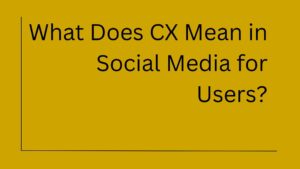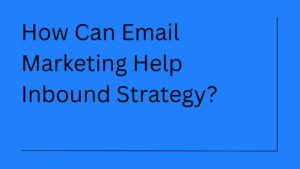When you’re trying to figure out how to market your product or service, one of the biggest decisions you’ll face is whether to cast a wide net or focus on specific groups of customers. This choice essentially boils down to choosing between differentiated and undifferentiated marketing strategies. And honestly, it’s not always as straightforward as it might seem at first glance.
Both approaches have their merits, and the “right” choice often depends on factors that aren’t immediately obvious when you’re planning your marketing strategy.
Let’s pass through what each approach actually means and how they differ in practice.
Understanding Undifferentiated Marketing
What is Undifferentiated Marketing?
Undifferentiated marketing, sometimes called mass marketing, is probably the more intuitive approach for most people to understand. It’s essentially treating your entire potential market as one big, homogeneous group. You create one marketing message and one product positioning, and you broadcast it to everyone who might be interested.
Think about Coca-Cola’s classic campaigns. For decades, they’ve used messages like “The Real Thing” or “Open Happiness” that are designed to appeal to pretty much everyone. They’re not specifically targeting teenagers versus middle-aged professionals versus retirees, they’re going for universal appeal. The idea is that happiness and refreshment are things everyone wants, regardless of their demographic details.
Benefits of Undifferentiated Marketing
This approach can be incredibly powerful when it works. You get economies of scale because you’re producing one campaign instead of multiple targeted ones. Your messaging becomes simpler to manage, and there’s something to be said for the clarity that comes with having one clear brand voice. Plus, if you do manage to create a message that truly resonates with a broad audience, the reach can be massive.
Challenges with Mass Marketing
But here’s where it gets tricky and this is something many have noticed in their observations of marketing campaigns over the years. What appeals to everyone often ends up appealing strongly to no one in particular. When you try to speak to everyone, you sometimes end up speaking to no one, if that makes sense.
The undifferentiated approach works best when you have a product that genuinely has universal appeal or when the differences between customer segments aren’t significant enough to warrant separate approaches. Basic necessities like salt or sugar might fall into this marketing category. Everyone needs them, and the reasons for purchasing don’t vary dramatically between different types of consumers.
Breaking Down Differentiated Marketing
What is Differentiated Marketing?
Differentiated marketing takes the opposite approach. Instead of viewing your market as one large group, you divide it into distinct segments and create tailored marketing strategies for each one. You’re essentially acknowledging that different groups of people have different needs, preferences, and motivations.
Let’s look at how car manufacturers handle this. Toyota doesn’t market the Prius the same way it markets the 4Runner. The Prius campaigns focus on environmental consciousness, fuel efficiency, and perhaps urban convenience. The 4Runner marketing emphasizes adventure, durability, and off-road capability. Same company, completely different messages, targeting completely different customer segments.
Benefits of Differentiated Marketing
This segmentation can happen along various lines demographics like age or income, psychographics like lifestyle or values, behavioral patterns like usage frequency, or geographic factors. The key is identifying meaningful differences that actually impact purchasing decisions.
What brands find particularly interesting about differentiated marketing is how it allows brands to develop almost distinct personalities for different segments while maintaining overall brand coherence. It’s like being multilingual you’re still the same person, but you adjust your communication style based on who you’re talking to.
The obvious advantage here is relevance. When your marketing speaks directly to someone’s specific situation or needs, it tends to be much more compelling than generic messaging. A working parent probably responds differently to time-saving appeals than a college student responds to budget-conscious messaging, even if they’re looking at the same product category.
Challenges with Targeted Approach
However, differentiated marketing comes with its own set of challenges. You’re essentially multiplying your marketing efforts, which means more complexity, higher costs, and the need for more sophisticated market research. You also run the risk of confusing your overall brand message if the different approaches aren’t well coordinated.
Comparison: Differentiated vs Undifferentiated Marketing
| Aspect | Undifferentiated Marketing | Differentiated Marketing |
| Target Audience | Treats entire market as one homogeneous group | Divides market into distinct segments with tailored approaches |
| Marketing Message | Single, universal message for all customers | Multiple messages customized for each segment |
| Cost Structure | Lower initial costs – one campaign to develop and manage | Higher costs – multiple campaigns, research, and management |
| Complexity | Simple to implement and manage | Complex coordination required across segments |
| Market Research | Basic market understanding sufficient | Extensive segmentation research required |
| Brand Consistency | Easy to maintain consistent brand voice | Risk of mixed messages if not well coordinated |
| Customer Relevance | May lack specific appeal to individual segments | Highly relevant to specific customer needs |
| Market Reach | Broad reach across entire market | Focused reach within targeted segments |
| Competitive Advantage | Limited differentiation from competitors | Strong differentiation through targeted positioning |
| Scalability | Easy to scale globally with same message | Requires adaptation for different markets/segments |
| ROI Potential | Variable – depends on universal appeal success | Often higher due to improved targeting precision |
| Best Suited For | Universal products, limited resources, new markets | Diverse customer needs, mature markets, sufficient resources |
| Examples | Coca-Cola, basic commodities, utility services | Toyota (Prius vs 4Runner), Apple products, fashion brands |
The Real-World Complexity of These Two Marketing Types
Here’s where things get a bit messy, though, and this is something that marketing textbooks don’t always capture well. In practice, the line between these two approaches isn’t always crystal clear. Many successful companies use what you might call a hybrid approach, where they have one core message but adapt the execution for different segments.
Apple is interesting to examine in this context. Their core message has consistently been about innovation, design, and user experience. That’s pretty universal. But look at how they market the iPhone versus the iPad versus the Mac, the core brand promise remains consistent, but the specific benefits and use cases they emphasize shift based on the intended audience.
The choice between differentiated and undifferentiated marketing also isn’t necessarily permanent. Companies often start with one approach and evolve toward the other as they grow or as market conditions change. A startup might begin with undifferentiated marketing because they lack the resources for complex segmentation, then move toward differentiation as it better understand their customer base and gain more resources.
Cost Considerations and Resource Allocation
One aspect that perhaps doesn’t get enough attention in discussions about these strategies is the resource implications. Undifferentiated marketing might seem cheaper on the surface, after all, you’re creating one campaign instead of several. But if that single campaign doesn’t resonate well with your audience, you could end up wasting significant resources on ineffective marketing.
Differentiated marketing requires more upfront investment in research and campaign development, but it can often deliver better returns because of improved targeting. It’s kind of like the difference between using a shotgun versus a rifle. One approach spreads your effort broadly, the other concentrates it more precisely.
The challenge is that you often don’t know which approach will work better until you try it, and switching strategies midstream can be expensive and confusing for your audience.
Market Maturity and Competition Factors
The stage of your market also influences which approach makes more sense. In newer, less mature markets, undifferentiated marketing might work well because customer preferences haven’t fully crystallized yet. Everyone’s still figuring out what they want from this new product category.
But as markets mature and competition increases, differentiation often becomes more important. When you have multiple competitors offering similar products, the ability to speak directly to specific customer needs can become a crucial competitive advantage. It’s harder to stand out with generic messaging when everyone else is also using generic messaging.
Making the Choice: Key Questions to Consider
So, how do you decide which approach is right for your situation? There are several questions that can help guide this decision, though many industry experts will admit the answers aren’t always immediately obvious.
First, how diverse is your target market really? If you can identify meaningful differences in how different groups of customers think about your product category, differentiated marketing probably makes sense. But if everyone approaches your product with roughly the same mindset and needs, undifferentiated might be more efficient.
Second, what resources do you have available? Differentiated marketing requires more sophisticated research, more complex campaign development, and often more extensive testing. If you’re working with limited resources, you might need to start with an undifferentiated approach and evolve from there.
Third, how competitive is your space? In crowded markets, the ability to speak directly to specific customer segments can be a significant advantage. In less competitive environments, a simpler approach might be sufficient.
The Bottom Line
The truth is, both differentiated and undifferentiated marketing can be effective; it really depends on your specific situation, market, and resources. What matters most is understanding your customers well enough to make an informed choice and then executing that choice consistently.
Maybe the most important thing to remember is that this isn’t necessarily a permanent decision. Markets evolve, customer preferences change, and your understanding of your audience will hopefully deepen over time. The strategy that works best for you today might not be the same one that works best in two years, and that’s perfectly fine.
The key is staying attentive to how your market responds and being willing to adjust your approach when the evidence suggests you should. Sometimes the best marketing strategy is the one that remains flexible enough to evolve with your business and your customers.






2 thoughts on “What is the Difference Between Differentiated and Undifferentiated Marketing?”
I just discovered your blog, and I’m genuinely impressed by the quality of your writing. Your ability to make complex marketing ideas so approachable is truly a gift. I’m excited to dive into your other posts.
Really, I’m saying, naturally, I like your website the way you put content; however, you need to take more time curating more content around marketing, which many are actually looking for, so many will surely come again.